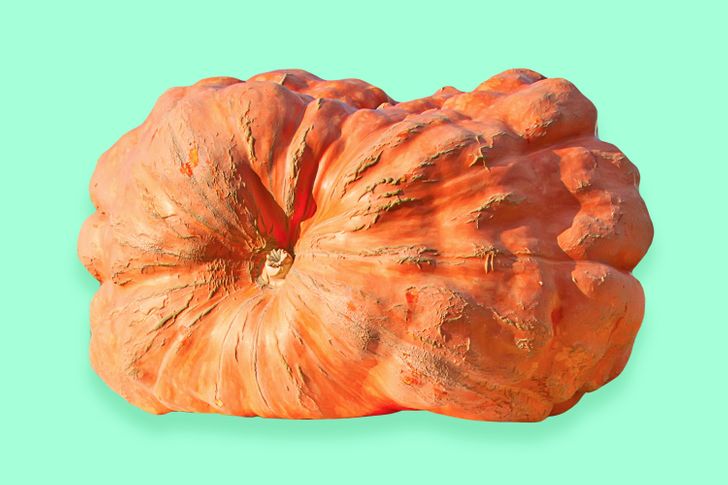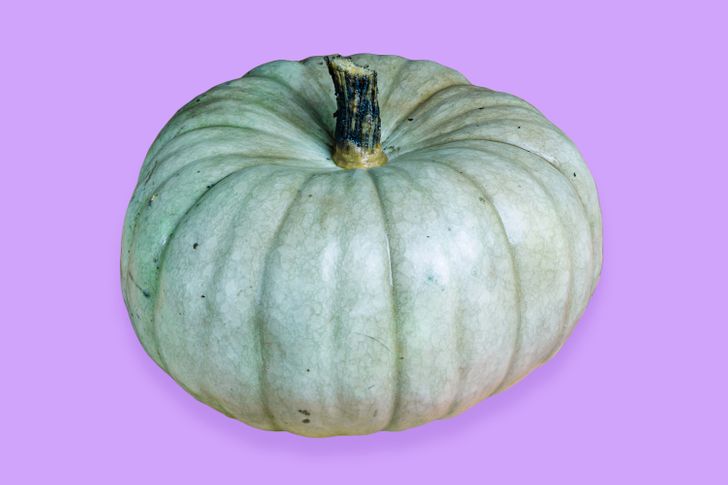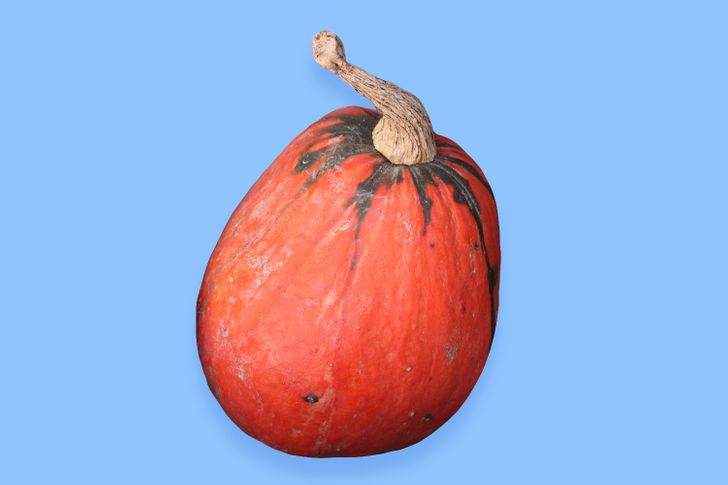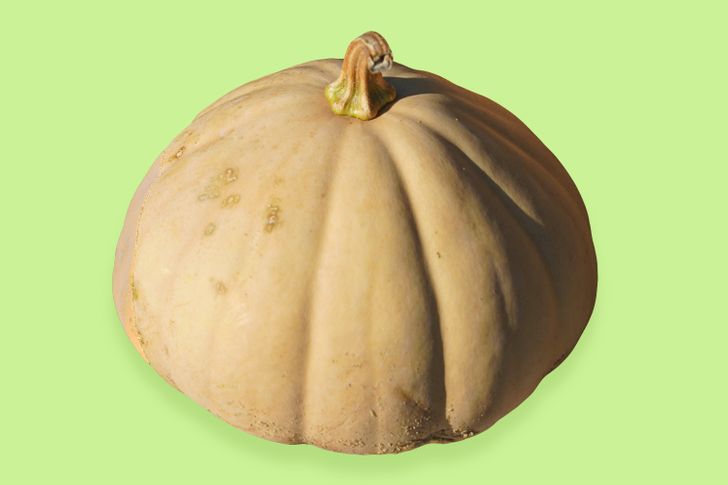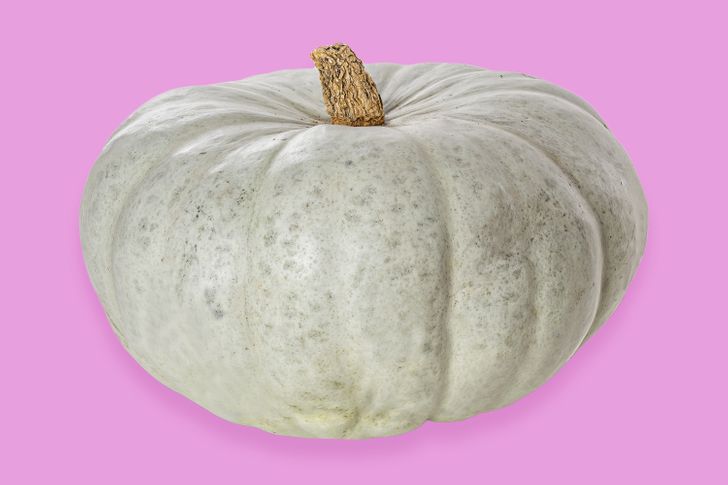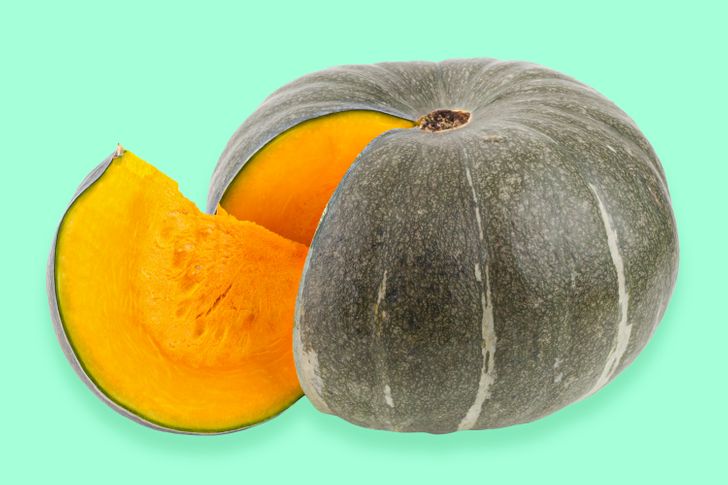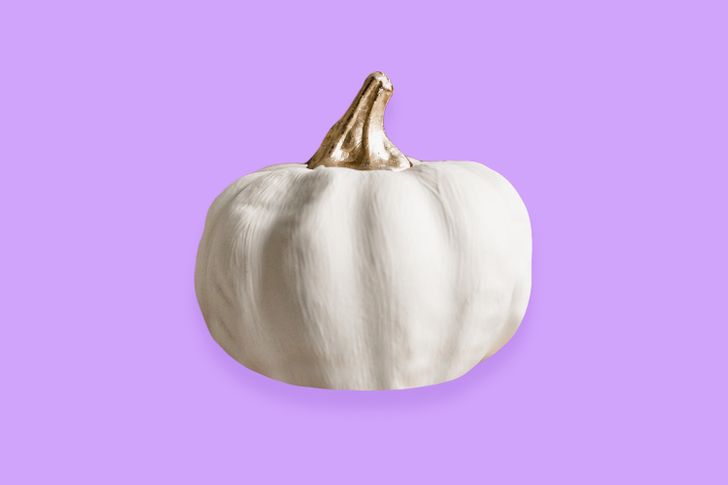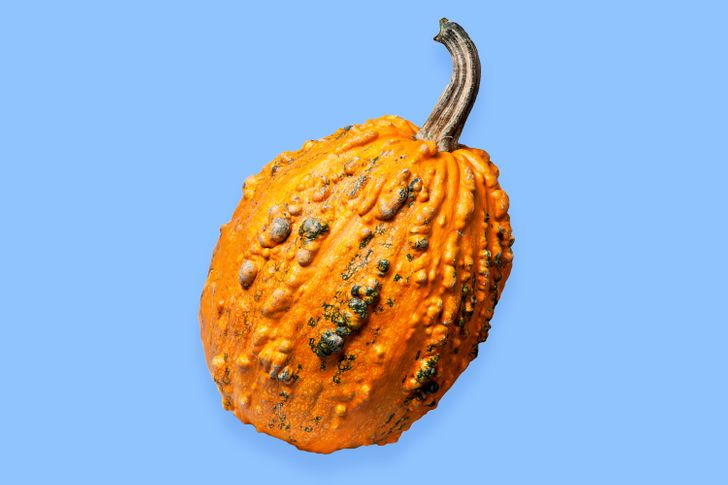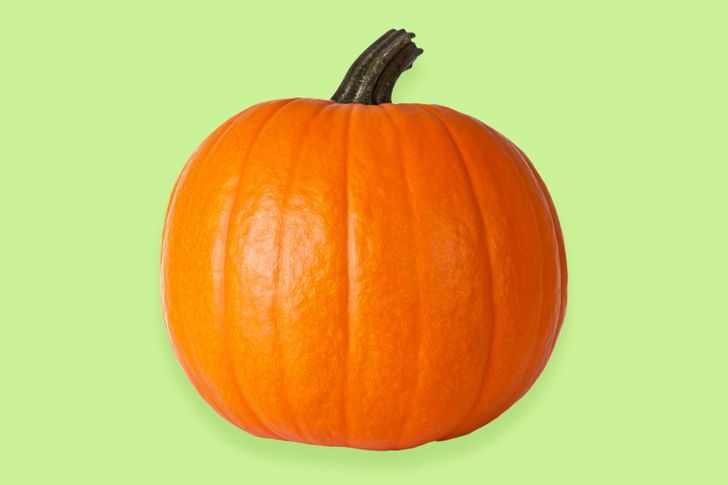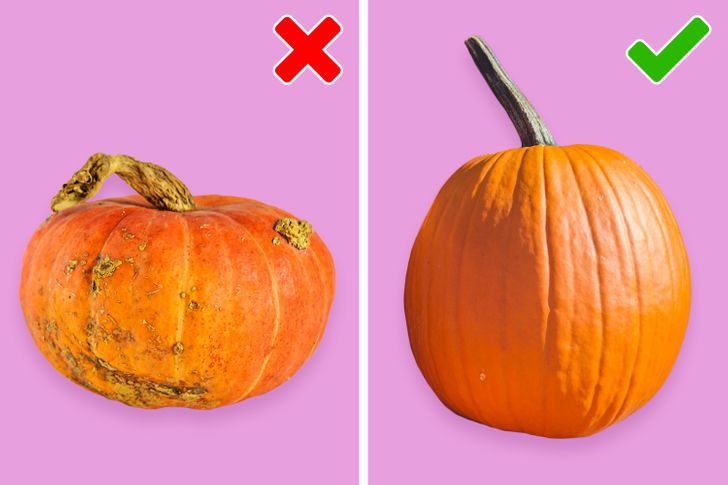A Guide to Different Types of Pumpkins
Regardless of the reason why you’re looking for a pumpkin, it’s important to know that there are a lot of different types. As you’ll see, not all of them are edible, just like not all of them are good for carving or decorating your home.
5-Minute Crafts created a small guide to help you differentiate between the most common types of pumpkins you’ll find at the farmer’s market. At the end of the article, you’ll also find some tips on choosing the best ones to carve.
Types of pumpkins
1. Big boys
These are often used in county fairs and international pumpkin harvest festivals where the largest wins. They’re not grown to be eaten or carved because they often lack the flavor of their smaller cousins and scooping out the pulp can be a chore. Some of these are:
- Atlantic Giant: Some of the world’s largest pumpkins. They can weigh up to 500 pounds and look bright orange. They have pronounced ribbing but it’s not deep and their texture is rather rough.
- Big Max: These can be pale to bright orange and can grow up to 300 pounds, but they’ll typically be slightly over 100.
- Big Moon: Bright orange color, shiny skin with a bumpy but not rough texture. They can weigh up to 200 pounds.
- Dill’s Atlantic Giant: These giant pumpkins can grow to an astonishing 990 pounds.
- Musquee de Provence: Large, deep ribbing and orange-brown in color. They are commonly up to 20 pounds in weight but can get much larger.
- Prizewinner: These will grow to an astonishing 200 pounds or more, hence the name. They have the most uniform shape of the giants.
2. Blue
Blue pumpkins contrast with their warmer orange and yellow siblings. Their color sometimes gives them a ghostly appearance. Some of the most popular varieties are:
- Jarrahdale: An Australian heirloom pumpkin that’s flattened but rounded as well. It has a light blue-gray color and it’s deeply ribbed. Its flesh is golden yellow and it has a mildly sweet flavor, with a creamy and dense texture that makes it great for pies.
- Blue Lakota: An heirloom variety from the Midwest that has a mix of blue and green. They’re slightly ribbed and often round to oblong.
- Kabocha: This is actually a squash that really looks like a green rounded or irregular pumpkin. It’s also known as Japanese Pumpkin, Ebisu, Delica, Hoka, or Hokkaido Pumpkin. Its skin is tough and green but has yellow flesh that stays firm and retains its shape after cooking. It makes a great choice in the kitchen because of its firm texture and sweet flavor.
- Kakai: They’re produced in Japan and they have a gray color with orange stripes or ribbing. They’re often 5 to 8 pounds and can be carved. On the other hand, they’re not the first choice for cooking. Still, Kakai is popular for its blue seeds, which can be roasted.
3. Red orange
A very popular type used for decoration. It looks like the bright orange pumpkin that the fairy godmother turned into a carriage in Disney’s animated classic, Cinderella. Red-orange varieties include:
- Lakota: This is an heirloom variety that hails from the Midwest. It has red skin with green and black markings that follow light ribbing. Often pear-shaped, it weighs 5 to 7 pounds. It has a tasty butternut squash-like flavor.
- Cinderella (Rouge, Rouge Vif d’Estampes): Popular because of their shape, bright color, and name. They’re flattened but rounded and deeply ribbed. They are edible and have a semi-sweet flavor. They’re moist and great for pies. Their bright red-orange skin and whimsical shape makes them ideal as decor too.
4. Cheese
Their resemblance to big wheels of cheese and their pale yellow-orange color make these pumpkins unique. They come in a variety of sizes. Among the best cheeses are:
- Long Island Cheese: A classic medium-sized pumpkin with an average weight of 10 pounds that has a pale cheese color and a light ribbing. Its deep orange flesh is sweet in varieties such as ’Long Island Cheese’ and ’Shakertown Field.’
- Musee de Provence: Often sold in slices in French markets. It has a pale orange-yellow skin, deep and distinct ribbing, and yellow-orange flesh. Its size can vary from medium to large and it has a rich, sweet, creamy, and dense flavor.
5. White
White pumpkins are often used as porch displays — they’re great when paired with orange varieties — but some of them are also edible. White pumpkins include:
- Casper: Bright white and more round than squat with only slight ribbing. Great for making pies and for baking. Not great for carving.
- Baby Boo: Palm-sized mini pumpkins with a bright white color and deep ribbing that tends to turn yellowish when exposed to direct sunlight. They’re not edible and they’re too small to be carved.
- Lumina: Brilliant white but smooth skin. Their flesh is bright yellow and valued for its flavor. It’s good for baking and can be carved or painted but won’t last very long.
- White Ghost (also known as Valencia): Pure white skin with a bright yellow and thick flesh. They’re pretty tasty and mostly edible but not made to be carved.
- White Pie: Ivory and somewhat smooth skin. It’s pretty small and oval. It has a sweet flavor with a buttery texture. Often one pumpkin will suffice to make a whole pie. They can be carved.
6. Green
Green pumpkins sometimes resemble squash. Popular varieties include:
- Green Striped Cushaw: Known for its green and white stripes. Its green skin is heavily flecked with white. The flesh has a pale orange color, similar to cantaloupe. It has a crooked neck and weighs about 10 to 20 pounds. Not good for carving but nice for decoration. Its strongest point is its excellent taste, like it was almost made for old-fashioned pies.
- Fairytale: An old French heirloom variety with dark green skin that resembles the Cinderella pumpkin in shape. It has an orange/peach blush when young and as it ages, the dark green turns to buff orange. Its flesh is bright orange and sweet. Great for cooking or baking pumpkin pies but not for carving.
7. Miniature
Not surprisingly, these are the kids’ favorites. Popular varieties include:
- Baby Boo: just like stated in number 5 above, these are palm-sized mini pumpkins with a bright white color and deep ribbing that tends to turn yellowish when exposed to direct sunlight. They’re not edible and they’re too small to be carved.
- Jack-Be-Little: Classic plump pumpkin shape with pronounced ribbing and an orange skin.
- Munchkin: Similar to Jack-Be-Little but slightly larger.
- Sweetie Pie: Medium orange, scalloped skin.
- Tiger: Yellow with orange mottling. Ribs are often deep at the top but they then fade at the bottom. It’s flat with a recessed stem.
8. Pimpled
Most of these are hybrids or heirlooms that are cultivated for their witchy and goblin-like appearances. Some varieties include:
- Warty Goblin: Bright orange skin and oval shape. Its hard shell makes it difficult to cut so not ideal for carving.
- Galeux d’Eysines: A unique variety with a salmon-pink skin full of warts that look like peanut shells. It’s edible and good for soups because of its typical scent that is reminiscent of sweet potatoes and apples.
- Marina Di Chioggia: A green heirloom Italian variety with a thick and warty skin. It has a squat shape and weighs 6 to 12 pounds. Its yellow/orange flesh is nice and sweet which makes it a favorite for cooking.
9. Classic orange
Many of these are prized for carving, eating, or both. Among the most popular ones you’ll find:
- Autumn Gold: An award-winning hybrid prized for early color and harvest. It’s your classic carving pumpkin: orange, smooth, with shallow but even ribbing. It’s about 12 inches tall and 9 inches wide and weighs 7 to 10 pounds.
- Connecticut Field: An heirloom variety often touted as the original Halloween pumpkin. Similar in appearance to Autumn Gold but somewhat larger. It also makes great pies.
- Jack-o’-Lantern: Another classic carving pumpkin and also an heirloom. Very smooth, with shallow ribbing. It’s round or slightly elongated.
- Sugar or Pie Pumpkins: Good for carving but better for eating. Somewhat smaller and rounder than their relative Connecticut Field.
- Winter Luxury: Netted or veiled with pale orange skin. It has a rich, creamy flesh, making it a longtime favorite for baking.
Tips for picking pumpkins to carve
- Choose the right type of pumpkin. It should have smooth, hard skin but shouldn’t be rock-hard either because it can be difficult to carve. The idea is for it to have a shell that is hard enough to protect it but that still allows you to get a knife through it. Use our guide to figure out which types are recommended.
- Avoid pumpkins with very thick skin. A good tip is to knock on the pumpkin. If it sounds and feels completely solid, it’s probably very thick-skinned, but if the sound is hollow, the pumpkin is ripe and ready to be carved.
- Use shape and weight as an indicator. Pumpkins that are heavier than others of the same size tend to have a thicker skin and tall, skinny pumpkins typically have stringy flesh. Both of these make clean cuts more challenging.
- Pay close attention to color. Color is a good indicator of a good pumpkin. For example, if you’re using a classic orange pumpkin, look for one that has depth in its color. Keep in mind that white varieties are also easier to paint.
- Check the base. You’ll probably want a pumpkin that has a flat base but always make sure it isn’t soft and mushy there.
- Do the same with the stem. A nice stem is always a cool detail to have. If the pumpkin does have it, check that it’s firm and secure. Also, never pick a pumpkin up from the stem as it may break, which can lead to faster decay.
